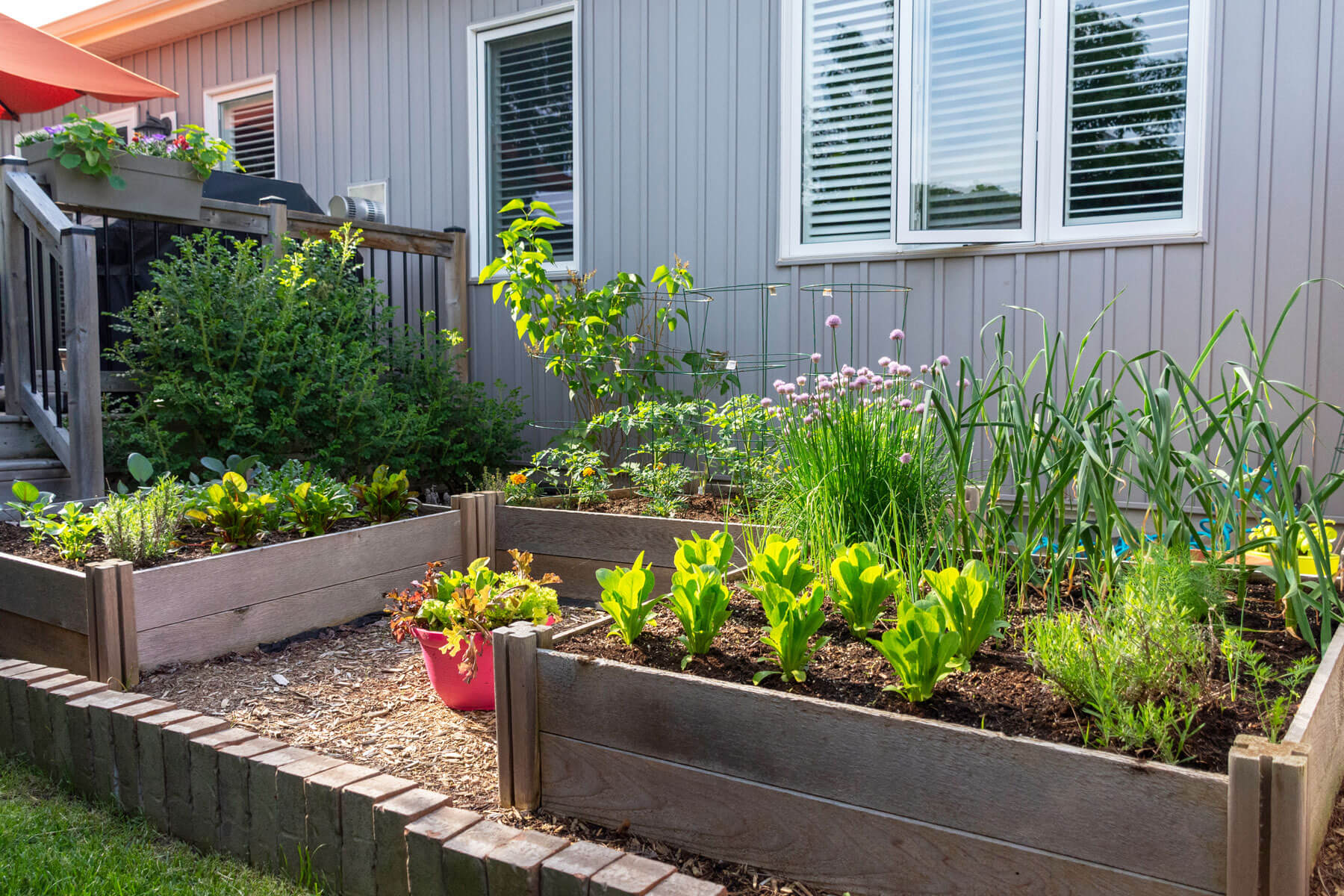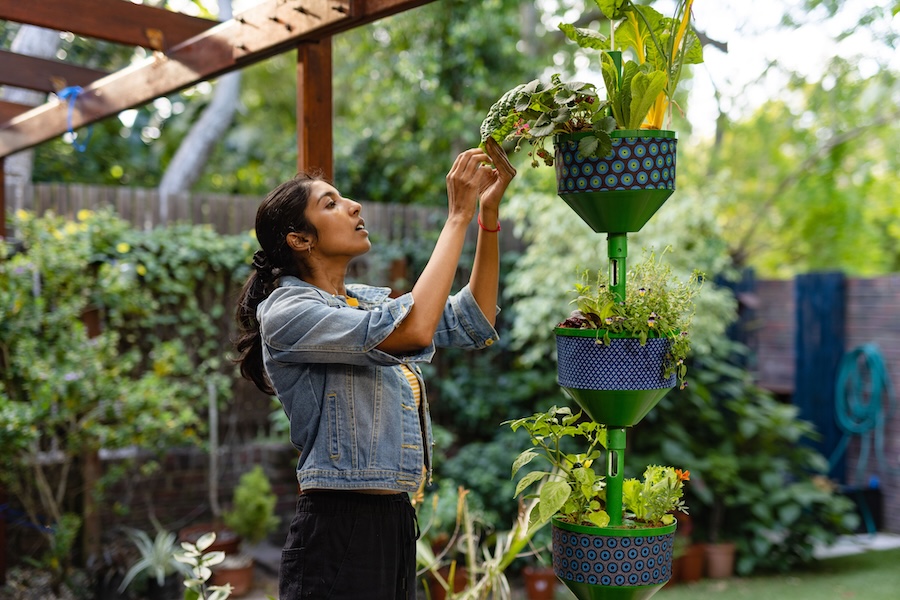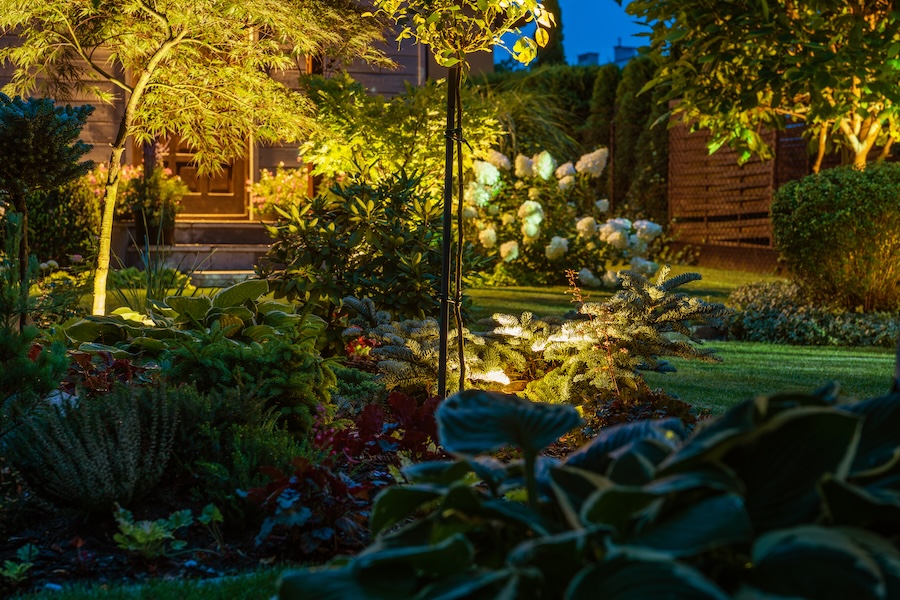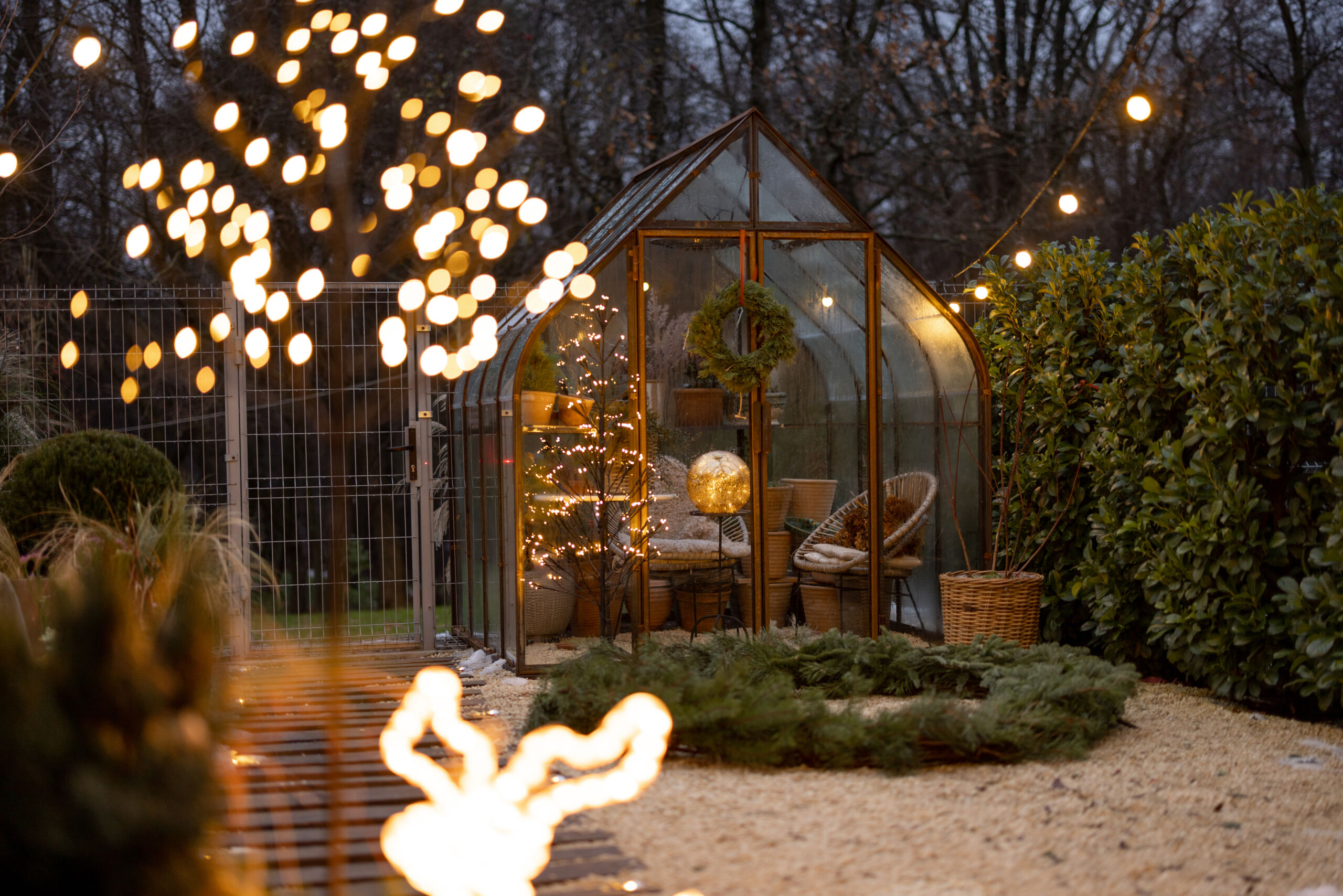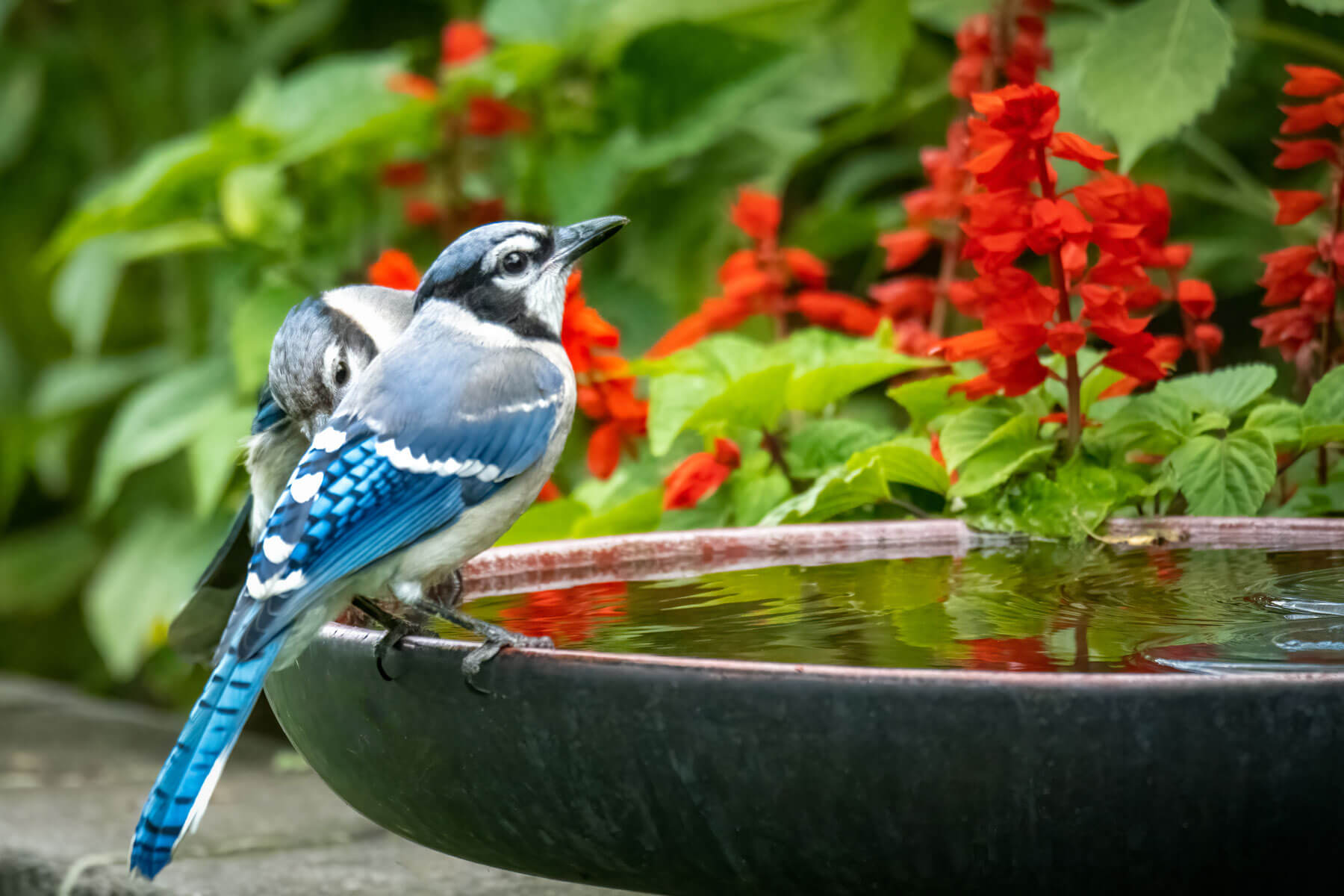Welcome to a world where your garden is more than just a plot of land – it’s a canvas for both culinary and visual art. In the heart of Ottawa, a trend is blossoming among homeowners, blending the practicality of vegetable patches with the elegance of landscape design.
Gardening in this way, elevates the traditional vegetable garden into a stunning feature of your outdoor space, harmonizing the allure of fresh, homegrown produce with the aesthetic beauty of a well-designed garden.
Imagine stepping into your backyard to be greeted not only by the vibrant colours of flowers and shrubs but also by the lush greens of kale, the bright hues of cherry tomatoes, and the aromatic presence of fresh herbs.
The integration of edible landscaping isn’t just about nourishing your body with fresh produce; it’s about creating an outdoor space that feeds your soul and enhances your home’s curb appeal.
If you have sprawling grounds or a modest urban plot, integrating edibles into your landscape offers a dual delight: the joy of harvesting your own food and the pleasure of a garden that captivates the senses.
Design Principles for Edible Landscaping
When it comes to integrating edible plants into your landscape design, certain design principles can help create a garden that is as visually appealing as it is productive. The first principle to consider is colour coordination.
Vegetables and herbs aren’t just about greens; they offer a spectrum of colours.
For some great examples; the deep purples of eggplants, the bright yellows of bell peppers, and the rich greens of lettuce can complement the colour palette of your existing garden.
Texture variety is another key principle. Mixing plants with different leaf shapes and sizes adds visual interest. Consider the feathery fronds of carrots or the broad leaves of squash as textural contrasts to the finer foliage of culinary herbs.
Using symmetry and asymmetry thoughtfully can also enhance the visual appeal of your vegetable garden. Symmetrical designs create a sense of order and formality, while asymmetrical arrangements can give a more natural, relaxed feel.
Incorporating these design principles doesn’t mean sacrificing the functionality of your garden. It’s about finding a balance. For example, arranging plants in patterns or groupings based on their colour and texture can lead to a garden that is both a feast for the eyes and the table.
And remember, the beauty of edible landscaping is its flexibility – it can be adapted to fit the style of any home in Ottawa, from the traditional to the contemporary.
Choosing the Right Plants for Ottawa’s Climate
Selecting the right plants for your edible garden in Ottawa is crucial. It’s not just about what you want to grow, but what can thrive in the local climate.
Ottawa’s climate, with its warm summers and cold winters, is suited for a variety of vegetables and herbs when growing season rolls around. When you’re planning your garden, think about plants that are not only hardy but also contribute to the overall aesthetic appeal.
Start with vegetables that do well in Ottawa, like tomatoes, peppers, and leafy greens. These not only provide fresh produce but also add vibrant colours and textures to your garden.
Consider incorporating perennial herbs like rosemary, thyme, and sage, which offer year-round greenery and aromatic foliage. For an added touch of beauty, edible flowers like nasturtiums and calendulas can be interspersed among your vegetables, providing splashes of colour and attracting beneficial pollinators.
When planning your layout, think about how these plants will look throughout the growing season. Combine plants with different growth habits and rates to maintain visual interest. For example, pair tall, slender plants like tomatoes with lower-growing, bushy herbs for a varied landscape. Also, consider the positioning of plants for both aesthetic value and optimal growth – taller plants should be placed where they won’t shade out smaller, sun-loving varieties.
Incorporating Raised Beds and Containers
Raised beds and containers offer a stylish and practical solution for integrating vegetable gardens into your Ottawa landscape, especially if you’re working with limited space or want a more formal look.
Raised beds can be designed to fit the style of your garden, whether you’re going for a modern, clean look or something more rustic. They provide excellent drainage, which is crucial for healthy plant growth, and can be filled with high-quality soil suited to your plant choices.
When selecting materials for your raised beds, consider options that complement your landscape.
Natural wood can blend beautifully with a traditional garden, while materials like corten steel or stone can provide a more contemporary feel. Containers offer additional versatility – they can be moved around to catch the sun, add height to the garden, and can range from large decorative pots to smaller, more understated designs.
Using containers also allows you to extend your growing season. Plants in containers can be moved indoors or to sheltered areas during unexpected frosts, giving you more control over the growing environment. This is particularly useful in Ottawa, where the weather can be unpredictable.
In both raised beds and containers, consider using companion planting principles. Some plants, when grown together, can help each other thrive – for example, planting basil near tomatoes can enhance their growth and flavor. By thoughtfully combining different plants, you can create a garden that is not only productive but also visually stunning.
Using Edibles as Decorative Elements
In the artful world of edible landscaping, your vegetable patch is not just a source of food; it’s a palette for creative expression. One of the most delightful aspects of integrating edibles into your Ottawa landscape is using them as decorative elements.
This approach transcends traditional gardening by turning functional plants into key aesthetic features.
Start by envisioning your edible plants as part of the broader tapestry of your garden. Herbs, for example, can be more than just culinary treasures.
With their varied textures and colours, herbs like purple basil, variegated sage, or golden oregano can create stunning borders or fillers in your flower beds. These aromatic plants not only add visual interest but also bring a sensory richness to your garden.
Trellises and vertical structures present another opportunity for beauty and functionality.
Climbing vegetables like beans or cucumbers, along with vining fruits like grapes or hardy kiwis (yes these can grow in South and East Ontario!), can be trained to grow on trellises, creating living green walls or privacy screens. This not only saves space but also adds a vertical dimension to your garden, drawing the eye upward and making a striking visual statement.
Don’t overlook the ornamental value of edible flowers. Flowers from plants like nasturtiums, calendulas, or borage can be sprinkled throughout the garden for bursts of colour. These blossoms not only beautify your landscape but also attract beneficial pollinators, enhancing the health and productivity of your entire garden.
Maintaining an Elegant Edible Garden
To keep your edible landscape in Ottawa looking its best, regular maintenance is key. This goes beyond just watering and weeding; it’s about managing your garden in a way that maintains its aesthetic appeal throughout the growing season.
Start with a solid plan for plant placement, considering how each plant will grow and change over time. This foresight can help prevent overcrowding and maintain a balanced, harmonious look.
Regular pruning and harvesting are essential. Not only do these practices encourage healthier plant growth, but they also keep your garden looking tidy.
Be attentive to the removal of spent plants or bolting vegetables, as these can detract from the overall beauty of the space. Integrating compost into your soil management routine can also keep your plants thriving and reduce waste.
Pest control is another important aspect of maintaining an elegant edible garden. Opt for organic and environmentally friendly pest control methods that protect your plants without harming the beneficial insects that contribute to a healthy garden ecosystem. Sometimes, the most effective pest control is simply encouraging a diverse range of plant life, which naturally keeps pest populations in check.
Year-Round Considerations
Creating an edible garden in Ottawa that remains attractive throughout the year requires a thoughtful approach to planting and design.
Given the city’s distinct seasons, it’s important to plan for changes not only in your garden’s appearance but also in its functionality. As fall approaches, consider planting vegetables that can withstand cooler temperatures, such as kale, Swiss chard, and Brussels sprouts.
These not only provide late-season harvests but also add visual interest with their unique textures and colours.
During Ottawa’s harsh winters, when your vegetable patch may lie dormant, you can still maintain visual interest in your garden. Evergreen plants play a crucial role here, offering a backdrop of green against the snowy landscape. And, structures like trellises and garden arches, which may support climbing vegetables in the summer, can become sculptural elements in the winter, especially when adorned with snow.
Perennial edibles are another key component of a year-round garden. Plants like asparagus, rhubarb, and certain herbs come back year after year, providing both a reliable harvest and a sense of continuity in your garden. These can be complemented with annuals to keep the garden dynamic and evolving from one season to the next.
Concluding Thoughts
In the pursuit of creating an elegant, edible landscape in your Ottawa home, remember that your garden is a living, evolving space. It’s an extension of your home that not only provides nourishment but also enhances the beauty of your surroundings.
By thoughtfully integrating vegetable patches into your landscape, you create a unique blend of functionality and aesthetics.
This journey of blending edibles and aesthetics in your garden is not just about growing food; it’s about cultivating beauty and harmony in your outdoor living space. It invites you to engage with your garden in a more intimate way, understanding the rhythms of nature and the joy of harvesting what you’ve grown.
As you apply the principles and ideas discussed in this article, you’ll discover that your vegetable garden is more than a plot of land; it’s a canvas for creative expression, a sanctuary for relaxation, and a testament to the beauty of nature’s bounty.
So, go ahead, plant those seeds, nurture them, and watch as your garden transforms into a stunning, edible escape right in your Ottawa backyard.

